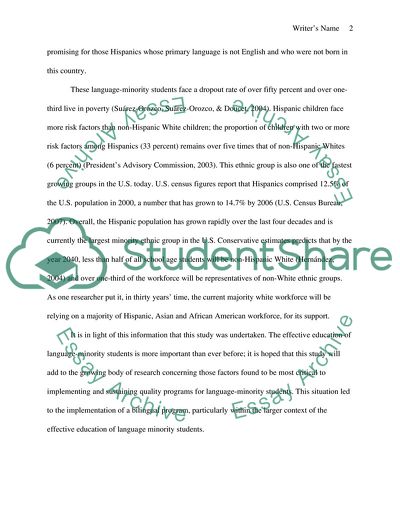Cite this document
(Bilingual Education Research Paper Example | Topics and Well Written Essays - 2000 words, n.d.)
Bilingual Education Research Paper Example | Topics and Well Written Essays - 2000 words. Retrieved from https://studentshare.org/education/1725528-bilingual-education
Bilingual Education Research Paper Example | Topics and Well Written Essays - 2000 words. Retrieved from https://studentshare.org/education/1725528-bilingual-education
(Bilingual Education Research Paper Example | Topics and Well Written Essays - 2000 Words)
Bilingual Education Research Paper Example | Topics and Well Written Essays - 2000 Words. https://studentshare.org/education/1725528-bilingual-education.
Bilingual Education Research Paper Example | Topics and Well Written Essays - 2000 Words. https://studentshare.org/education/1725528-bilingual-education.
“Bilingual Education Research Paper Example | Topics and Well Written Essays - 2000 Words”, n.d. https://studentshare.org/education/1725528-bilingual-education.


